When you think about sarongs, you might picture vibrant beachwear or casual summer outfits, but their history runs much deeper. Originating from the Malay word "sarung," these garments have evolved over centuries, reflecting cultural identities and regional variations across Southeast Asia. From the majestic Majapahit Empire to modern interpretations, sarongs tell a story of resilience and adaptation. Yet, their significance often gets overshadowed. As you explore their journey, it becomes clear that there's much more to these fabrics than meets the eye. What role do they play in today's fashion landscape?
Etymology of Sarong
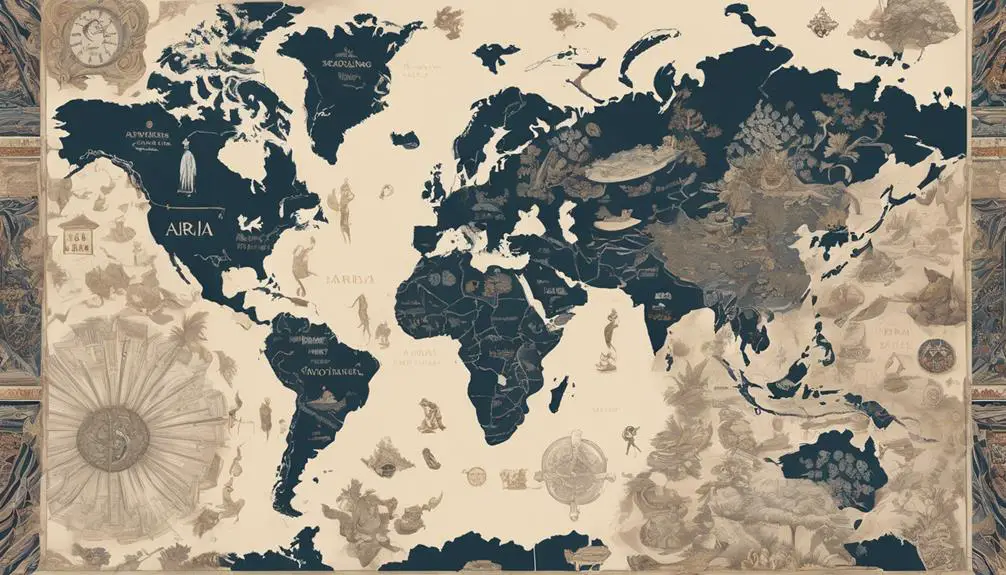
The word "sarong" has an intriguing origin rooted in the Malay language. Derived from the Malay word "sarung," which means "to cover" or "to sheath," it reflects the sarong's purpose as a versatile piece of fabric worn across various cultures. This traditional garment has deep roots in Malay culture, evolving through centuries of history and trade in Southeast Asia.
The first recorded use of the term "sarong" dates back to 1834, where it specifically referred to a skirt-like garment worn by Malays. Curiously, the sarong goes by different names in various regions; for instance, "saram" in Tamil, "sarama" in Sinhala, and even "srong" in West Africa, showcasing its widespread appeal and adaptability.
Throughout the colonial period, the sarong shifted from a local staple to a symbol of cultural identity, embodying a blend of local customs and influences from other cultures.
This adaptability highlights not just the garment's practicality but also its significance in social and historical contexts. So, as you explore the world of sarongs, you're not just observing a piece of fabric; you're engaging with a rich tapestry of history and cultural exchange.
Historical Overview
Throughout history, sarongs have played an essential role in various cultures, especially in Southeast Asia. Originating from the Malay word "sarung," meaning to cover or sheath, these lengths of fabric have been wrapped around the waist since at least 1834.
With deep historical roots in the Indonesian archipelago, sarongs gained popularity during the Majapahit Empire, evolving from simple garments into intricate designs featuring vibrant colors that reflect the rich cultural tapestry of the region.
During colonial periods, European powers often viewed sarongs as symbols of backwardness, leading to bans that aimed to suppress their use. Yet, despite this oppression, sarongs remained integral to cultural identity, symbolizing resistance and resilience. They connected generations, serving as traditional clothing that transcended time and circumstance, reflecting the spirit of the people who wore them.
Today, the significance of sarongs endures, not only as a symbol of cultural continuity but also as a fashionable choice that has gained international appeal. Their influence extends beyond Southeast Asia, inspiring trends and styles worldwide, allowing you to celebrate and appreciate their vibrant history while embracing modern interpretations.
Regional Variations
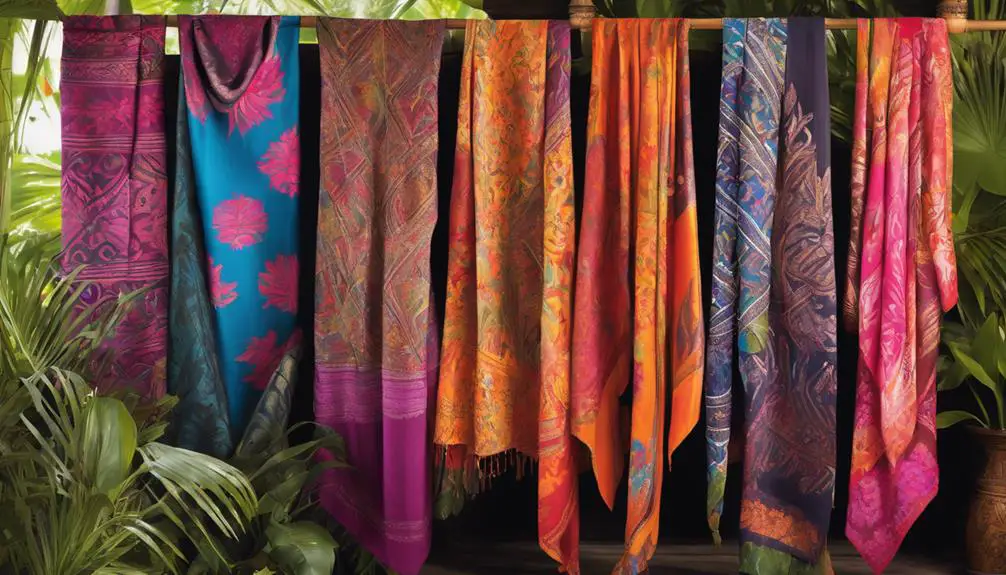
Across Southeast Asia, sarongs take on various forms, each reflecting the unique cultural heritage of its region. In Myanmar, for instance, both men and women don the longyi, a traditional garment that's often wrapped around the waist and known for its brightly colored dyes.
Meanwhile, in Cambodia, the sampot showcases local craftsmanship; this rectangular cloth is draped and tucked to create a stunning ankle-length piece, typically made from silk or cotton.
Traveling to the Philippines, you'll find the malong, a versatile tube-like garment that serves as a skirt, dress, or even a blanket, embodying the area's rich cultural diversity.
Over in Indonesia, batik sarongs are significant cultural items, renowned for intricate patterns and colors that convey social status, often reserved for ceremonial purposes.
Finally, in India, the mundu resembles a sarong, primarily worn by men, and features a simpler design, usually in plain white or muted colors, reflecting regional customs.
These regional variations not only highlight the versatility of sarongs but also celebrate the vibrant traditions and craftsmanship of the cultures they originate from.
Cultural Significance
Worn by many across Southeast Asia, sarongs embody cultural identity and heritage, making them more than just clothing. These traditional pieces of fabric signify the rich history and diverse customs of various ethnic groups.
In Malay culture, for instance, men often wear checked sarongs during Friday prayers, while women incorporate them into their daily attire, showcasing a blend of practicality and tradition.
The intricate batik technique, prevalent in Indonesia, further highlights the cultural significance of sarongs. Each design tells a story, reflecting the wearer's heritage, social status, and even occupation.
Variations like the longyi in Myanmar and the sampot in Cambodia not only display unique clothing styles but also emphasize the local customs and identities of different regions.
Moreover, sarongs have served as symbols of post-colonial resistance, embodying pride and the resilience of cultural identity despite attempts at suppression.
By wearing these garments, individuals connect to their ancestors and assert their heritage, creating a profound bond with their history.
Ultimately, sarongs are much more than a simple fabric; they're powerful representations of the diverse cultures that enrich Southeast Asia.
Modern Fashion Trends
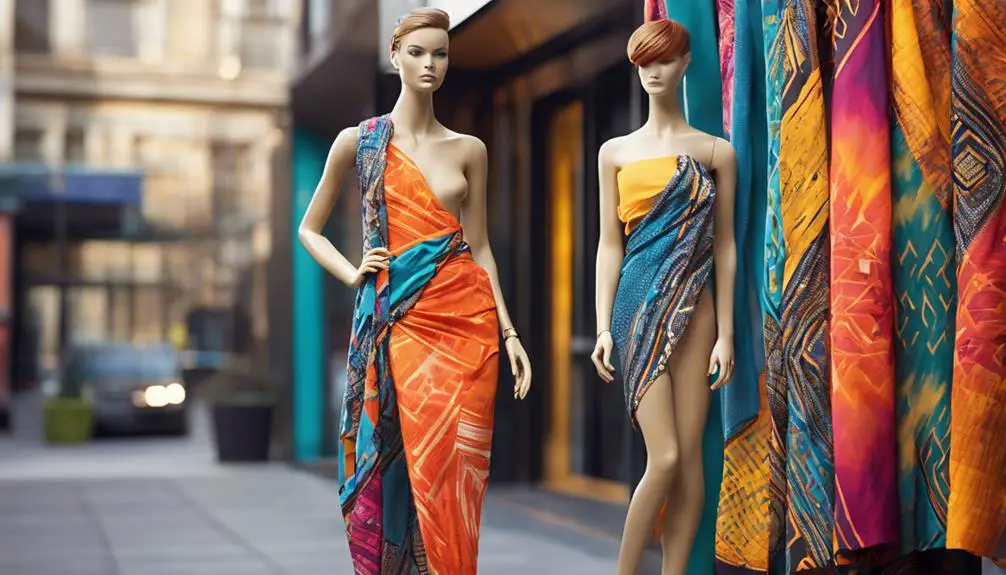
Embracing versatility, sarongs have evolved into a staple of modern beachwear, effortlessly transforming into cover-ups, skirts, or dresses.
You'll notice that modern sarongs are often crafted from lightweight materials like cotton, silk, polyester, and rayon, making them perfect for those warm tropical days.
Fashion designers have recognized this trend, increasingly incorporating sarong-inspired designs into their collections, blending traditional aesthetics with contemporary flair.
When you wear sarongs, you'll find yourself enveloped in bright colors and intricate patterns, often featuring motifs that reflect vibrant tropical themes and island aesthetics.
This lively approach not only enhances your beach wardrobe but also allows for creative self-expression.
Thanks to the rise of social media, countless styling techniques have emerged, showcasing innovative ways to wear sarongs that inspire fashion enthusiasts everywhere.
As you explore different looks, you'll appreciate the lightweight comfort and versatility of these garments, proving that sarongs aren't just a fashion statement but also a celebration of culture and creativity.
Whether you're lounging by the ocean or heading to a summer gathering, modern sarongs guarantee you're stylishly prepared for any occasion!
Securing Techniques
When it comes to securing a sarong, mastering various tying methods is key to ensuring comfort and style. You'll find that the most common securing methods involve wrapping the fabric around the waist and tying a knot or tucking the fabric securely. For added stability, you can use a belt to reinforce the wrap. Men and women alike can enjoy these versatile styles, adapting them to their preferences.
In some cultures, additional layers of fabric are wrapped tightly around the body, keeping the sarong in place during movement. This technique often reflects local customs, showcasing unique regional styles.
You might also explore alternative securing techniques, such as using pins or decorative brooches, especially for more formal occasions where a polished look is desired.
Each culture has its own specific techniques, often passed down through generations, adding a rich historical context to the art of wearing a sarong.
Similar Garments Worldwide
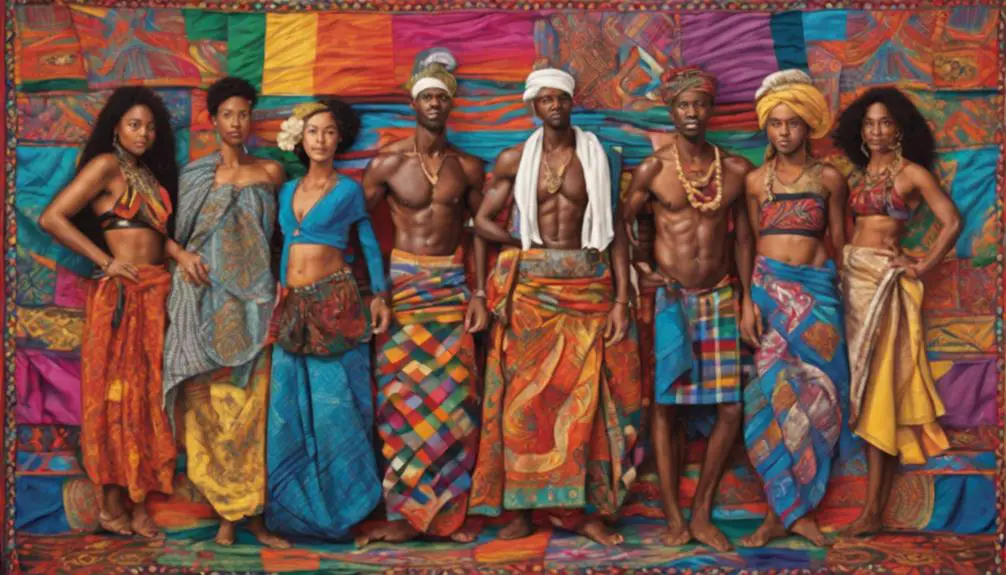
The versatility of the sarong finds parallels in various garments around the globe, each reflecting unique cultural identities and functions.
In East Africa, the colorful kanga is often worn by women, showcasing vibrant prints and serving as both a daily garment and a statement piece for special occasions.
Similarly, the lungi in South India, a traditional garment worn by men, resembles a sarong and is made from light cotton, typically in plain or checkered patterns, providing comfort in the warm climate.
In the Horn of Africa, the macawiis is draped around the waist by men, characterized by its striking colors and patterns, symbolizing local heritage.
Meanwhile, women in Manipur, India, embrace the phanek, a rectangular piece similar to a sarong, which serves multiple purposes, from clothing to carrying items.
Finally, the kikoy, a cotton wrap worn by men in East Africa, features a delightful striped design, embodying the craftsmanship of local artisans.
Each of these garments, whether designed for men or women to wear, highlights the rich tapestry of traditional attire globally, demonstrating how a simple rectangular piece of fabric can carry profound cultural significance.
Cultural Representation in Media
While the sarong is a versatile garment deeply rooted in various cultures, its representation in media often distorts its significance. You might notice that in many Hollywood films, particularly those set in tropical locales, the sarong is frequently worn by women in a way that emphasizes hypersexualized imagery. This portrayal, dating back to stars like Dorothy Lamour in the 1930s and 1940s, often overlooks the rich cultural history of the sarong, which has traditionally been worn by both men and women across diverse societies, including Arab fishermen and Muslim men in East Africa.
Instead of honoring its origins, these media representations frame the sarong as an exotic garment, reducing it to a mere fashion statement. Western designers have appropriated this garment, creating high-priced items that lack the traditional meanings associated with the sarong.
Social media further complicates matters, showcasing trendy sarong styles without acknowledging their historical roots. When you wear a sarong, consider its journey—embracing a piece of cultural representation that deserves respect and understanding. By appreciating its significance, you can help shift the narrative towards a more accurate portrayal of this beautiful garment known worldwide.
Frequently Asked Questions
What Is the Purpose of a Sarong?
A sarong serves multiple purposes, acting as a versatile garment for traditional attire and beachwear essentials. Its comfort factor and ethnic diversity make it a stylish fashion statement, perfect for travel and ceremonial use.
What Is a Fun Fact About Sarong?
Did you know sarong styles vary widely across cultures? From traditional uses in ceremonies to modern adaptations as trendy beachwear, their fabric choices reflect history timelines, regional variations, and even fashion trends influenced by celebrities.
Why Do Some People in Southeast Asia Wear Sarongs?
Picture vibrant fabrics swirling around you; in Southeast Asia, you wear sarongs for their cultural significance. They blend traditional attire with regional variations, serving as everyday wear or a fashion statement for ceremonies, reflecting gender differences.
What Is the Meaning of a Sarong?
A sarong symbolizes cultural significance, showcasing fabric variations and traditional patterns. Its historical origins reflect regional differences, while modern adaptations highlight sustainable materials. You can wear it for various occasions, celebrating heritage and style.
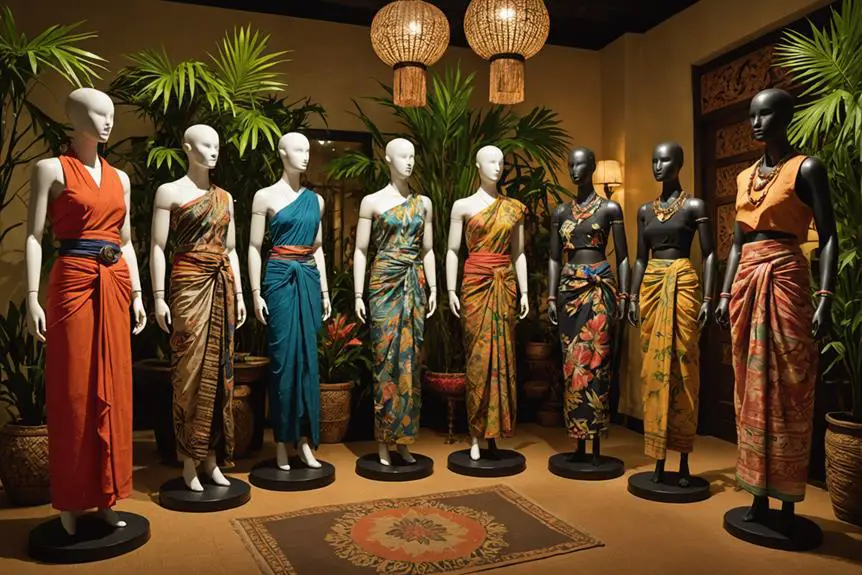

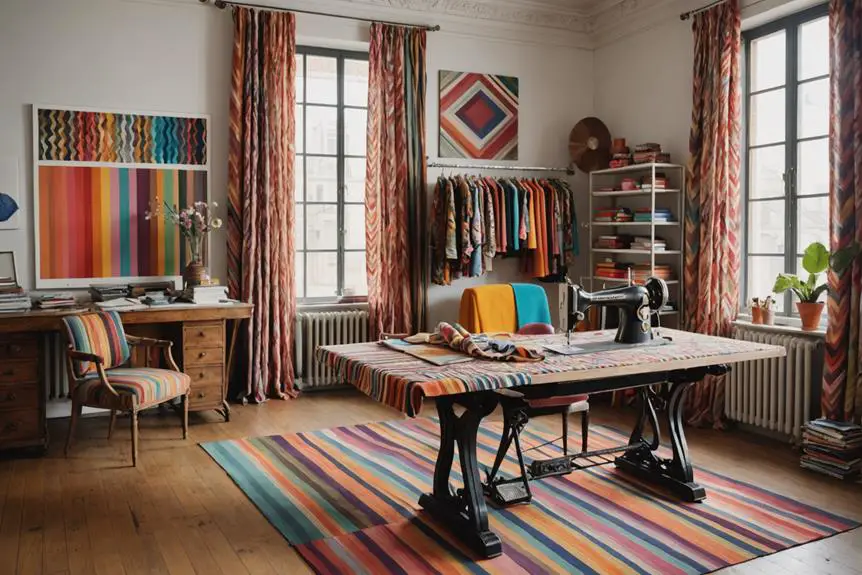


Plunge into the massive sandbox of EVE Online. Become a legend today. Fight alongside hundreds of thousands of explorers worldwide. [url=https://www.eveonline.com/signup?invc=46758c20-63e3-4816-aa0e-f91cff26ade4]Join now[/url]
Venture into the breathtaking universe of EVE Online. Start your journey today. Build alongside thousands of pilots worldwide. [url=https://www.eveonline.com/signup?invc=46758c20-63e3-4816-aa0e-f91cff26ade4]Download free[/url]
I’m not sure whhy ?ut th?s blog i? loading incredibly slow fo? me.
Is anyone e?se h?ving thi? issue orr ?s iit a problpem on my end?
?’ll check back ?ater ?nd seee if the p?oblem stil? exists.